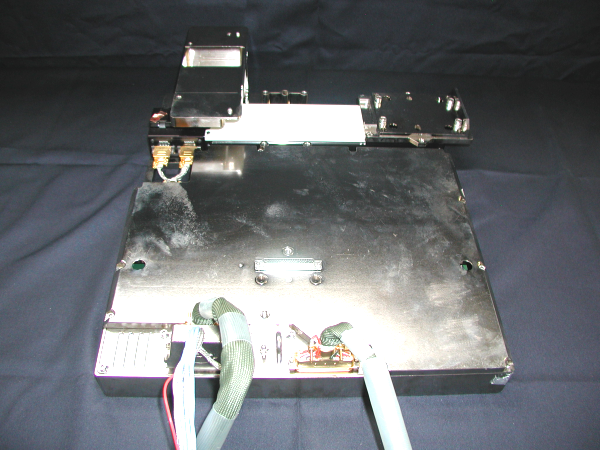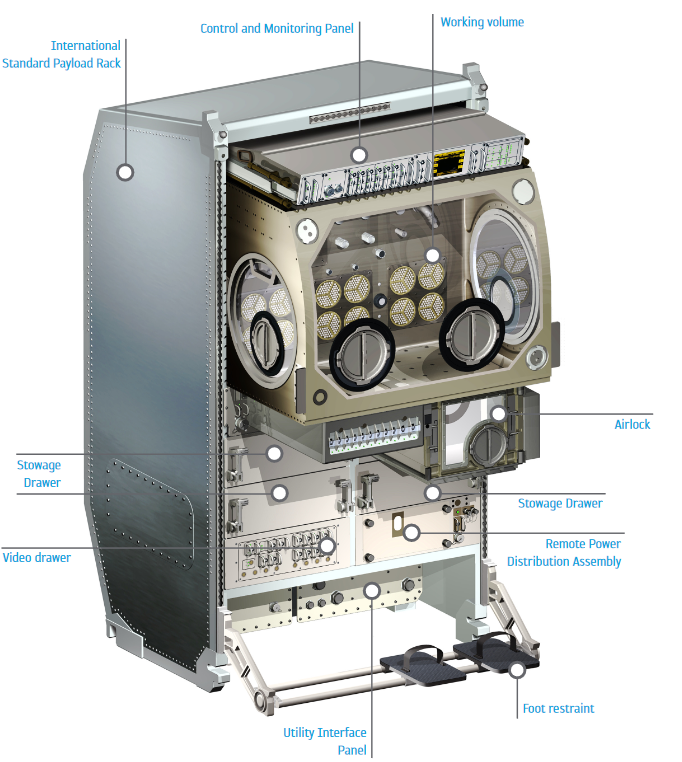Selectable Optical Diagnostics Instrument (SODI)

The Particle Vibration (T-PAOLA) experiments have been executed in space using the Selectable Optical Diagnostic Instrument (SODI).
SODI is an instrument for scientific research in the fields of fluid-dynamics, materials science and biology. It was developed by an industrial consortium (led by QinetiQ) in the frame of a dedicated contract with the European Space Agency, and launched to the ISS in 2010.
Essentially, it is a payload equipped with various optical diagnostics.
Moreover, it is based on a modular concept, i.e. it consists of different subsystems, which the astronauts can install in the work volume of the Microgravity Science Glovebox.
SODI Basic Inserts and the MSG
The various components of SODI used for the Particle Vibration (T-PAOLA) experiments are listed in the following together with a brief illustration of their functions.
The Facility Control Unit (FCU), also known as Bottom Plate Assembly, includes the drivers that control all SODI functions, i.e. the drivers for the laser diodes, the measurement from temperature sensors, the USB_2 to SPI_2 interface module, the digital and analog interfaces, the Peltier / Heater drivers and the (PIM2403) drivers for translation mechanisms. Importantly, it also hosts the Accelnet Micro Panel (AMP) motor driver of the vibration mechanism specifically required by the Particle Vibrations experiment.

The Image Processing Unit (IPU) is another required vital sub-system. It consists of a single-board computer and a set of exchangeable hard drives for the storage of images and other data. The images generated during the execution of experiments are saved through this unit.


Since the experiment requires direct visualization of the particles dispersed in a transparent fluid, optical components also contribute to the final instrument setup. These are the so-called Fixed and Moving Optical Modules. In turn, these rely on a red laser 670 nm (Hitachi 6714G) .
These are essentially interferometers by which both the instantaneous liquid density field and the distribution of particles can be visualised. The particles appear as dark circular spots on the top of a distribution of interference “fringes”.
The optical systems (both fixed and moving modules) are equipped with a CCD camera Pantera SA 2M30 (manufactured by Dalsa) with a resolution of 1920 x 1080.
Being a Class-2 payload, i.e. a specific kind of hardware that cannot be used in a stand-alone configuration on the ISS, SODI partially relies on the potentialities offered by the aforementioned Microgravity Science Glovebox (MSG). The different ‘basic’ inserts of the SODI hardware must be installed inside the Work Volume (WV) of the MSG. This feeds the required power, the exchange data with ground and satisfies the necessary level of containment (given that hazarous liquids such as ethanol are involved in the Particle Vibration experiment).


Particle Vibration Specific Hardware
Some additional ‘experiment specific hardware has been developed “ad hoc” for the PARTICLE VIBRATION experiments.
The related setup consists of small cubic cells (10 x 10 x 10 mm). Each cell is filled with a different fluid-solid particle mixture as detailed in the Fluid Particle Preparation section.
Each cell is also equipped with Peltier elements controlled by the Facility Control Unit (FCU). This is needed to establish the desired temperature difference across the fluid (needed to generate thermo-vibrational convection in the presence of vibrations). Each cell has ‘two’ windows allowing visualization of particles along two perpendicular directions.




Such cells are not operated separately, rather, they are hosted in groups of two inside SODI specific “cell arrays” (see the figure below).

The main functions of the cell arrays can therefore be summarized as follows:
- Guarantee a two-level confinement of the liquids.
- Contain two sample cubic containers (cells), allow for their replacement within the SODI facility and keep them aligned with the optical modules;
- Provide thermal control to the sample cells during the experiment.
The shaker: An additional component is used to shake the cell array (generating vibrations). This sub-system creates a sinusoidal displacement of the cell array along the x direction and can be set to various frequencies and amplitudes. It has been designed to align the moving optical module with the experiment cells and must be mounted on the SODI bottom plate.

Visit the PARTICLE VIBRATION Hardware Installation Page to watch videos showing the crew installing the above hardware on board the ISS !
